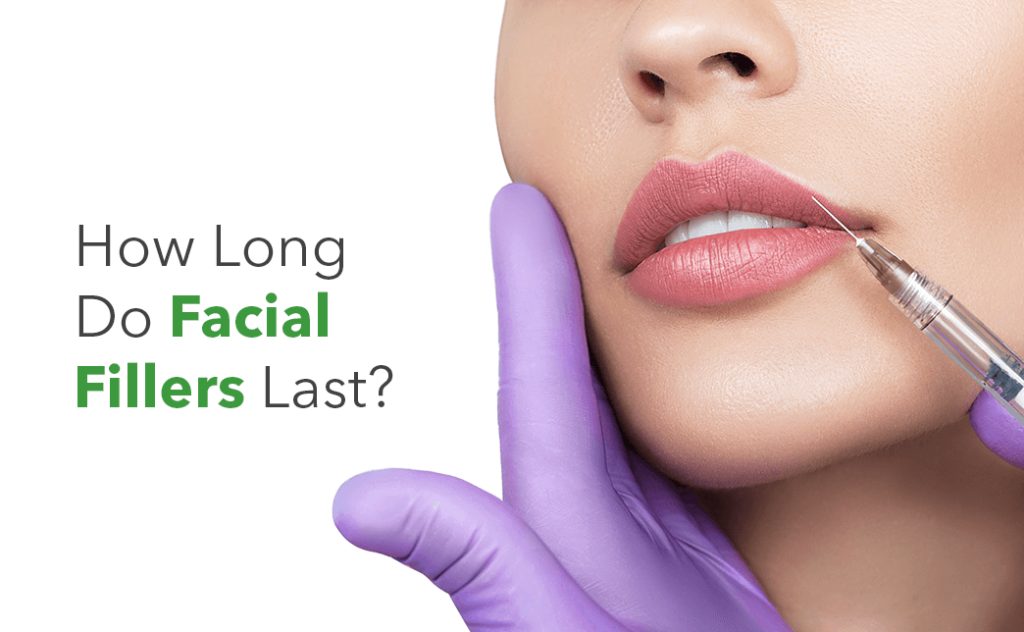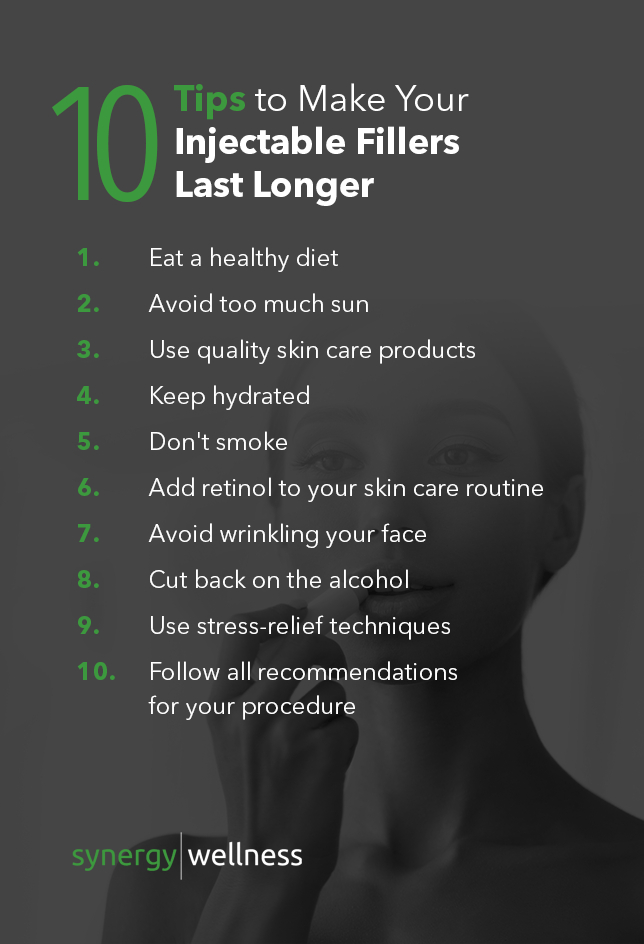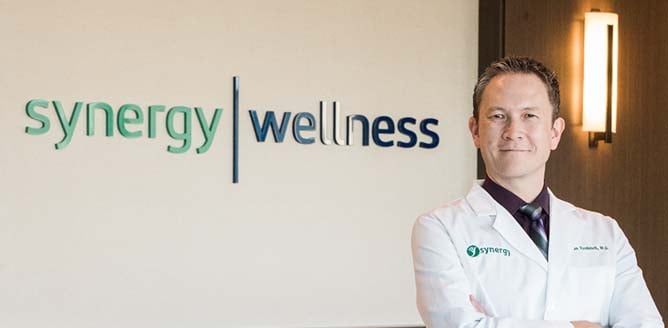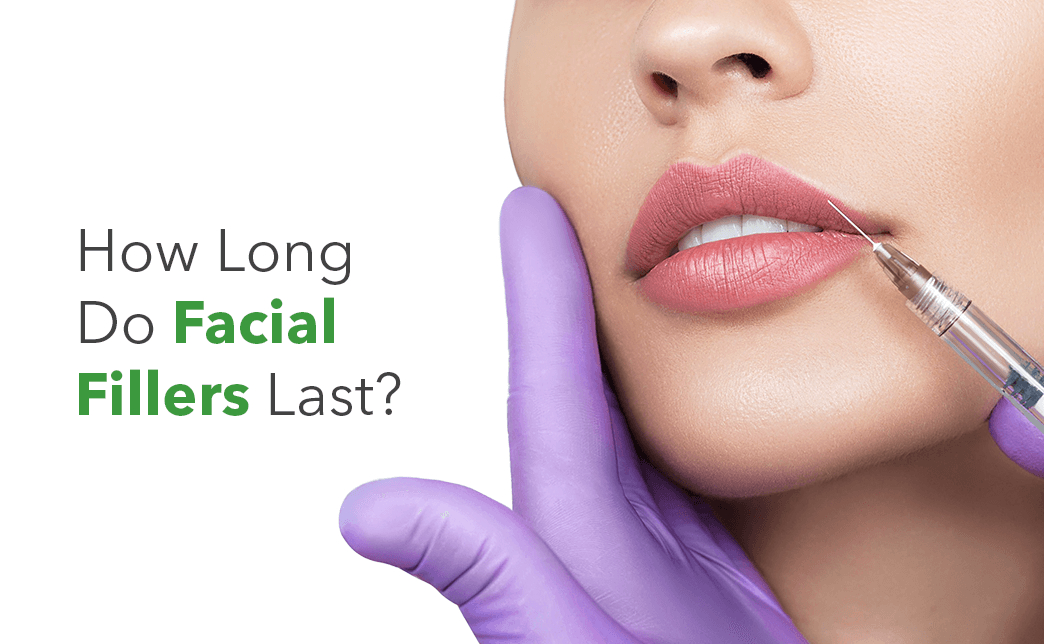
These days, it seems like everyone from celebrities to soccer moms has benefited from facial fillers. You can get these from a dermatologist, plastic surgeon or aesthetician during an in-office, outpatient procedure. These products can reduce the appearance of wrinkles and address volume loss in the lips, cheeks and other areas. If you’re considering getting injectables, you’re probably asking, “How long do lip fillers, cheek fillers and other products last?” This question is common among people researching these procedures, so we’ve compiled this guide to provide everything you need to know about these rejuvenating facial treatments.
What Are the Uses of Facial Fillers?
You may hear people refer to facial fillers as wrinkle fillers, as minimizing fine lines is their best-known purpose. However, they also play several other roles. There’s a wide range of facial fillers in use today, all designed to reverse the signs of aging in different ways. As we age, our bodies produce less collagen and elastin — crucial structural proteins that keep skin supple, plump and resilient. As a result, our skin becomes thinner and prone to wrinkling and sagging, and we lose volume in the soft tissues of the face as gravity pulls the tissue downward. These issues result from everyday muscle movements like chewing, smiling and squinting. Lifestyle factors like smoking and excessive sun exposure can further exacerbate signs of premature aging.
Skilled injectors typically use facial fillers to erase fine lines and reverse volume loss. When carefully injected into strategic areas, fillers can turn back the clock and give you a subtly refreshed, rejuvenated look. They can add volume in spots that may appear gaunt or hollow, such as the temples, tear troughs and the backs of your hands. Facial fillers can smooth out perioral wrinkles and the lines that bracket your mouth. However, dermal fillers are not only for wrinkles. Providers also commonly use them to treat acne scarring or to help even out facial asymmetry. They are also becoming increasingly sought-after in lip augmentation. In any of these uses, the goal is to provide a smoother, more youthful appearance.
What Facial Fillers Are Popular Today?
Dermal filler injections have come a long way, and have a fascinating history. You may not know it, but the practice of using injectable fillers dates back to the 19th century, when a doctor harvested fat cells from a patient’s arm and transplanted them to fill in facial scarring. By the 1940s and ’50s, doctors began experimenting with and using silicone as a facial filler. However, this practice often resulted in undesirable and dangerous nodules called granulomas. Silicone fell out of favor and was under a ban for several decades, until a safer version entered the market in the 1990s.
Amid all this, around the 1970s, several other filler options began to rise in popularity. One of these was collagen, taken from various animals, especially cows. This bovine collagen is still in use today, though it is less reliable and has some unpleasant side effects like swelling and possible allergies. At about this same time, researchers began studying hyaluronic acid’s potential as a facial filler, and found it to be much safer and more effective than other methods. It remains among the most sought-after options today.

In modern times, we’ve seen a move toward more synthetic, biocompatible dermal filler injectables, but with a broader variety of choices available. The most popular dermal fillers in use today include the following.
- Hyaluronic acid: Hyaluronic acid is a naturally occurring substance found within your skin. This molecule attracts water to keep your skin hydrated and naturally plump. When used as an injectable filler, hyaluronic acid generally comes in a smooth gel form and gives temporary results, lasting between six months to a year. Many forms of HA injections also include a small amount of lidocaine to reduce pain during the procedure. Popular brands of hyaluronic acid include Juvéderm, Restylane and Belotero.
- Calcium hydroxylapatite: Another naturally occurring substance in the body found mostly in the bones, calcium hydroxylapatite is also a dermal filler. It has microscopic particles suspended in a gel that’s a bit thicker than hyaluronic acid gels. CaHA fillers last a little longer than HA fillers, at about 12 months on average, and have the bonus of encouraging collagen growth. Radiesse is the best-known brand name of calcium hydroxylapatite injections.
- Poly-L-lactic acid: Health providers have used poly-L-lactic acid for years in other medical applications, including dissolvable stitches. The PLLA filler dissolves only a few days after the injection, but the substance encourages the body’s natural collagen production to fill in those trouble spots. The results can last around two years. Sculptra is a well-known brand name of PLLA on the market.
- Polymethylmethacrylate: Polymethylmethacrylate is common for facial filler treatments. This material contains tiny, permanent microbeads that remain under the skin, where they continue supporting the desired shape. PMMA injectables also contain some collagen for additional filler support. Bellafill is the best-known PMMA filler brand today.

When Can You Expect to See Results?
If you’re considering using a facial filler, of course you want to know when to expect your desired look. The exact timing will depend on the type of filler you use and your tissues’ individual qualities. For the most part, you should see an immediate effect. The treatment area will likely feel very full and plump right after the injections. About two weeks following the treatment, the filler will settle into your tissues, while hydrating your skin and giving you the appearance you desire.
How Long Do Absorbable Dermal Fillers Last?
After those initial two weeks, when your dermal filler treatment has settled into the look you want, how long will you enjoy these results? The answer may vary, depending on your metabolism. Other factors include the injectable your provider recommends, where you use these products, the amount of filler and how you care for your skin afterward. Let’s take a closer look at some of the most common injectables and how long their results last.
- Juvéderm: Juvéderm encompasses a family of facial filler products with slightly different formulas designed to address specific areas of the face. Juvéderm products are hyaluronic acid-based formulas that are ideal for everything from lip plumping to facial contouring. So, how long does Juvéderm last? Depending on the Juvéderm consistency your provider uses, the results can last about a year, with some formulations lasting up to two years.
- Restylane: Another hyaluronic acid-based dermal filler, Restylane treatments are excellent for areas with delicate skin, such as around the lips. Another form of Restylane is specifically for hand rejuvenation. Most Restylane treatments give results that last around six months, with some formulas providing 18 months of outcomes before you may need another treatment.
- Revanesse: Revanesse products also use hyaluronic acid as a filler and are ideal for minimizing nasolabial folds, more commonly known as parentheses lines. This treatment generally provides about one year of results before you’ll need a touch-up.
- Radiesse: Radiesse products consist of a blend of calcium hydroxylapatite and collagen. These filler treatments have a dual effect. They provide immediate results, but also leave long-lasting effects. The calcium microspheres plump up problem areas while boosting your body’s natural collagen production. Radiesse products generally last about a year, and can even last longer than this.
10 Tips to Make Your Injectable Fillers Last Longer

If you’re considering injected fillers to reduce the appearance of wrinkles or fill in other problem areas, you want to make this investment in your appearance last. You can do several things to help your injectable treatments last longer, so you get the most out of your minimally invasive procedure.
- Eat a healthy diet: Nutrients like antioxidants are great for the skin, but too much caffeine, salt and sugar can impair your skin’s ability to hydrate and heal. Choose healthy, whole foods and avoid overly processed ones.
- Avoid too much sun: Extended sun exposure can dry out and even burn skin. You’ll extend your injectable results by avoiding excess sun exposure. Always wear a broad-spectrum sunscreen with an SPF of 30 or higher. Keep your skin covered with a wide-brimmed hat or other protective clothing.
- Use quality skin care products: Avoid cheap products that may irritate skin or cause allergic reactions. Read the ingredient lists on every product you use, and avoid anything with ingredients you don’t recognize.
- Keep hydrated: Drinking enough water is a good idea for many health-related reasons, including skin protection. Proper hydration extends the benefits of your recent dermal filler treatment.
- Don’t smoke: Stopping smoking has numerous health benefits, but the bonus is that you’ll enjoy the effects of your injectables longer.
- Add retinol to your skin care routine: Retinol is an ingredient that works to protect and moisturize the skin, and is easy to find in various skin care products today. Ask your provider to recommend one specially formulated for use after Botox or dermal filler treatments.
- Avoid wrinkling your face: It’s impossible to stop making your natural facial expressions. However, try reminding yourself to avoid repetitive movements like frowning or wrinkling your nose. It can go a long way toward preventing future wrinkles and prolonging your filler treatments.
- Cut back on the alcohol: Alcohol can be dehydrating for the body, and drinking too much too often can sabotage your skin’s youthful glow. It’s also a blood thinner, which can increase your chances of bleeding and bruising post-procedure. Reduce your intake for the best dermal filler results.
- Use stress-relief techniques: Chronic stress can wreak havoc on our bodies in so many ways, including suppressing your immune system and making you feel fatigued and run-down. But when you’re overstressed, you’re also more likely to worsen wrinkles through crying or brow-furrowing. Try yoga, meditation and other self-care techniques to lessen your daily stress.
- Follow all recommendations for your procedure: Read through any information given to you by your dermal filler provider, and follow any instructions they provide carefully. Schedule any appropriate follow-up appointments as recommended for the best results from your dermal filler treatment.
How Do Dermal Fillers Differ From Botox?
Dermal fillers and Botox treatments are injectable products that reduce the appearance of wrinkles, especially on the face. These painless, outpatient procedures do not require stitches, scarring or anesthesia. Both are temporary solutions, requiring additional treatments to maintain their effects over a long period. However, this is where the similarities end.
The most significant difference between Botox and dermal fillers is their primary function. Just as their name suggests, dermal fillers work by reversing volume loss and stimulating collagen production, which plumps up the target areas. They could serve as lip fillers, provide cheek contour or minimize wrinkles and fine lines. Botox works much differently from dermal fillers. Instead of filling in wrinkles, Botox injections block the nerve signals that cause muscles to contract, preventing them from moving and deepening fine lines and wrinkles in the face. Botox is also FDA-approved to treat migraines, excessive sweating, unwanted muscle spasms and other medical conditions.
While Botox and dermal fillers are excellent anti-aging products, each is ideal for addressing different types of wrinkles. Botox is best for treating dynamic wrinkles, or the lines that form from repetitive facial expressions like squinting, smiling or furrowing your brow. In contrast, dermal filler treatments are a solution for wrinkles and fine lines that result from lost skin elasticity, especially around the mouth and mid-face. Fillers are also excellent at adding volume and contour to areas like your lips, cheeks and tear troughs.
Botox and dermal fillers give temporary results. Botox will gradually wear off over three to six months, while dermal fillers will last anywhere from four months to two years, depending on how quickly your body absorbs the substance and the composition of filler products used.

Schedule a Consultation at Synergy Wellness Today
If you’re considering lip injections, wrinkle treatments or any other cosmetic procedures, the qualified medical professionals at Synergy Wellness can help you find the perfect treatment for you. Our staff members have extensive training in advanced aesthetic treatments, and our spa-like atmosphere ensures you’ll feel pampered during your treatments. If you have any questions, or are ready to schedule a consultation, contact us today at Synergy Wellness.



